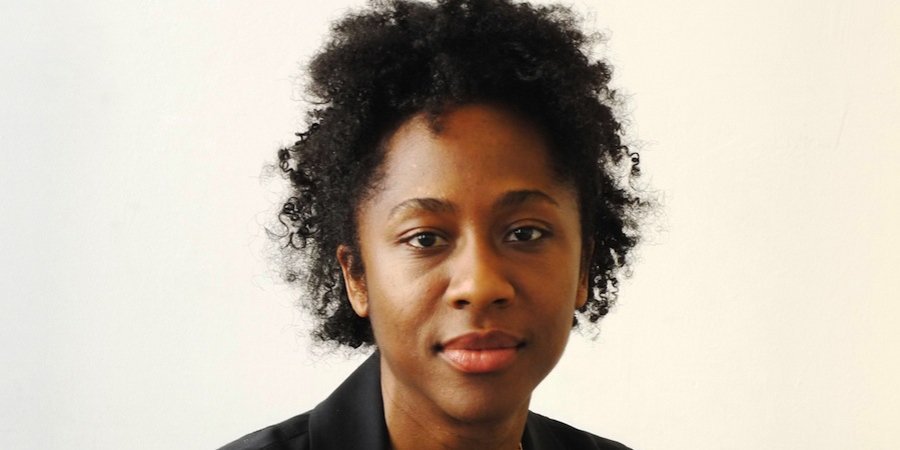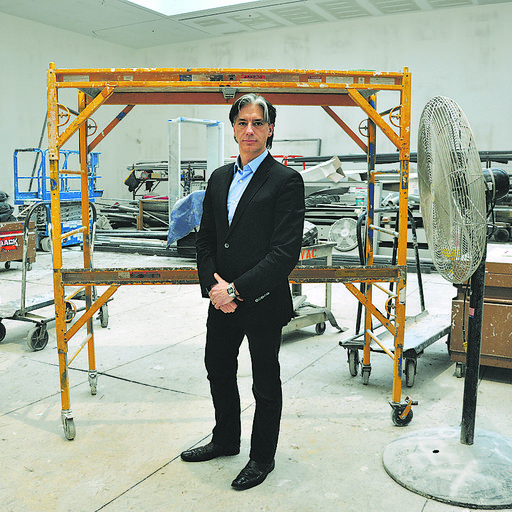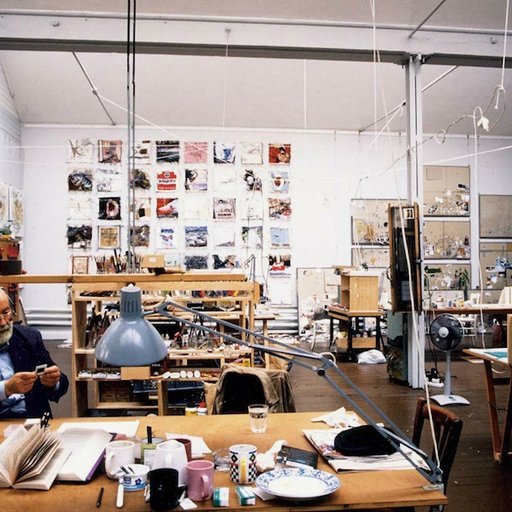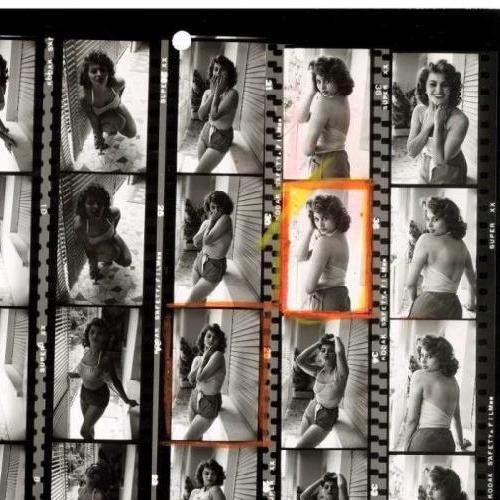Over the past five years, the curator Naomi Beckwith has shown a remarkable ability to identify rising talents and showcase them in exhibitions—only to watch them become stars on the international stage in coming years. These artists have included Lynette Yiadom-Boakye, who may be the hottest breakout star of the year, having won the Future Generation Art Prize, been included Massimiliano Gioni's Venice Biennale exhibition, and nominated for the Turner Prize. Beckwith gave the artist her first solo show in 2010 at the Studio Museum in Harlem, went on to work for the ICA Philadelphia, and is today the Marilyn and Larry Fields Curator at the MCA Chicago.
To find out about how Beckwith finds the emerging artists she champions (a roster that also has included Sanford Biggers, Xaviera Simmons, and Rashid Johnson), and where she is looking today, Artspace editor-in-chief Andrew M. Goldstein spoke to her about her approach to curating.
You are proven to have a knack for identifying emerging artists before they have much of an exhibition or gallery history to speak of. What is your secret?
Let me just preface this all by saying it’s not a science by any means. It's really a process of doing several things at once and then making sense of it all after the fact. For me, the first step is just to be looking at art constantly, and there are several places to do that. The first one is right around me, sometimes inside my own museum, looking at smaller, younger galleries. Also, I look very intensely at art fairs, and I follow galleries that make emerging artists their specialty. Oftentimes, if it’s not in the context of a MFA program, the best places to see emerging artists are going to be younger galleries or special project spaces, nonprofits, and alternative spaces that have a keen eye for younger artists. Interestingly enough, I think many alternative spaces are disappearing.
Why is that?
It’s pure economics—it’s harder to find experimental spaces within small institutions, which makes it all the more important that museums or large, established institutions really pick up the mantle supporting emerging artists.
You mentioned that there are some galleries that specialize in working with emerging artists. How do you decide which of these to follow?
You really just look at their programs. Like a good collection, a good gallery will have artists that make sense together. It doesn’t mean that all their worth is the same, but you can maybe see a similarity in their thought processes, in their material production, or in their educational backgrounds. So when a gallery has a strong program, it usually means the curator has a special eye, and you can begin to say that "this gallery does x or y or z." And oftentimes when gallerists are invested in art as kind of cultural and social force, they are showing their peers—so a really good young gallerist is also probably showing really good young artists as well. Those are always great places to start.
It's interesting you say that, because you rarely hear museum curators talking about forging connections with the gallery sphere.
It might be kept a little quiet, but we’re constantly looking toward that direction. I am a person who very strongly believes that there is one function that galleries do, and there’s certainly a function that museums do, but that isn’t to say that we work in opposition to each other. And, often, gallerists are my friends and peers, and we went to the same schools, sometimes at the same time. We know each other, and they’re working just as hard as I am at looking for artists—and I’m sure they’re looking in my direction as well for new artists and new ideas.
What do you look for in an emerging artist him- or herself?
For the most part, I’m looking for people who create strong objects that both demonstrate a knowledge of art history but also have a unique voice. They should feel familiar and unfamiliar at the same time. It can be hard to articulate exactly what that means when it comes to a particular object, but when it came to the work of someone like Lynette, I could easily locate a conversation that was taking place with early modern art, and also an incredible conversation with photography and the history of representation, all at the same time. Her work came across to me as so incredibly lively in an eerie way. Those figures in her paintings are so incredibly present that I couldn’t deny that something almost metaphysical was happening when I first saw them, which isn’t to say spiritual, but just that there is a lot of information in her work. And when there’s something that really touches you, that’s when you want to champion it.
How did you first come to see her work?
The first time I physically saw her work as at the Studio Museum. She was in the group exhibition there called “Flow,” curated by Christine Kim that I assisted with. By the time Lynette started presenting in the art fairs, we knew that she was ready for a solo show. That’s what I mean when I say I sometimes look internally for shows and ideas.
Beyond emerging, you have also occasionally been ahead of the curve when it comes to historical reconsiderations of periods, such as in your “30 Seconds Off an Inch” show in 2009 that looked back at the influence of Gutai and Arte Povera. Since then, those historic movements have transformed from academic curiosities to become incredibly buzzy categories of art that are being spotlighted in museums across the world. Can you talk about this process of rediscovery?
For me, it’s incredibly important to be an art historian. Curating has undergone such a professional shift, so the field itself has become so much more professionalized. You go to school to become a curator now, and that’s a wonderful, wonderful thing, but I think in terms of being able to think through art objects in an exhibition format, you have to think about art itself and the language surrounding it, and the history of where it comes from. This is also why I said before that when I look for strong artists, I look for artists who clearly have been thinking about art history as much as about their contemporary context. In that sense, it’s also important to follow the lead of the artists. Sometimes it’s obvious what they’ve been doing, what they’ve been looking at, what they’ve been studying; other times, you really have to delve into the work and begin to help them think through the precedents for their practice.
This has become really important to me, because I am a woman of color and have “specialized” in artists of color, and often the narratives surrounding work of these artists have been about social issues, social history, the American racial dynamic, or other contexts. But while those contexts are equally important for me to consider, what I believe is all too commonly lost when considering their work is the conversation about art practice. Sometimes we have to remind ourselves that these are artists, and their primary academic study was typically the history of art—not sociology. So I think my commitment to looking back and keeping historical focus is about making sure that when we’re talking about artists, we’re constantly talking about art.
Going back the act of searching for new artistic talents, what advice would you have for collectors who are hoping to pursue works by emerging artists? How are they supposed to navigate this very uncertain area?
I would give two pieces of advice, and the first is to start with what you already know. If your collection has a strength, look for emerging artists who are reflect those strengths as well. And the second piece of advice would be... to seek advice. Go to a museum and ask the curators of that museum for their advice. It’s really about being a service to an institution, and that institution can also be of service to you.
Who are some of the artists that you’re looking at now?
I’m always scared to put those names in print, because it becomes so much about ascribing value. So I won’t mention names, per se, but I’m still really excited about artists who are looking at the body and looking at performativity. These are fascinating fields for me because they are sometimes hard to market, and I’m interested in artists who are setting up experiences, setting up performances, setting up ephemeral things, and really making a practice out of that or creating objects that come from these performative gestures. So that’s what I’ve really been fascinated by lately. Right now, I also have a show up called "Homebodies" that is about the domestic, so the big question for me lately is: what does it mean for an artist to work at home?
What conclusion did you come to in curating the show?
Well, it means different things for different artists. But many times, it means working with a specific set of materials, found materials, things that decay, things that feel soft rather than large and heroic. Sometimes it means a very focused practice, making observations about the things around them, and sometimes it means being very aware of what your role you occupy in the home. I remain fascinated by those women in the ’60s and ‘70s who took their labor as mothers and cleaners and turned it into art objects—and that goes back to my interest in performativity, which doesn’t just mean an interest in performance but also in making gestures into art.
Now, you’ve worked as a curator in New York and Philadelphia and Chicago—how would you describe the differences in their art scenes?
That’s a really good question. New York’s sort of an industry center, so what you get are artists who are very interested in developing certain professional skills and acquiring certain professional markers—they are focused on the stages of graduating from art school and then getting residencies and then gallery representation and then being featured in group shows and then in monographic museum shows. You can almost write out the script. I mean no judgment here, but it’s fascinating to see how people work very hard to achieve certain things—that’s incredible to watch. And then in Philadelphia there were a lot of collaborative projects, with different groups coming together and creating together constantly. In Chicago, the scene is largely defined by the phenomenon of the apartment gallery. These are spaces started more often than not by recent MFA graduates who start to create these private galleries that are social spaces and sometimes also commercial sites. The exhibitions exist for themselves and their peers, and the galleries are often temporary—we’re talking a lifespan of two or three years, then the proprietors move on and do something else. The idea of the format is that the social space of the academy is extended into a formalized yet informal-feeling space, and it's a big phenomenon here.
Now that you're based in Chicago, do you find the city a fertile source of interesting emerging artists?
Exceptionally so. What’s fascinating about Chicago is that it has a large school, the Art Institute of Chicago, that brings a large number of art students here. Many move on, but many stay for a little time. As a result, you have a robust population of artists who are looking for something to do, and that just feeds the beast—you then have a proliferation of apartment galleries because people are really just trying to take care of themselves and their creative impulses.
























